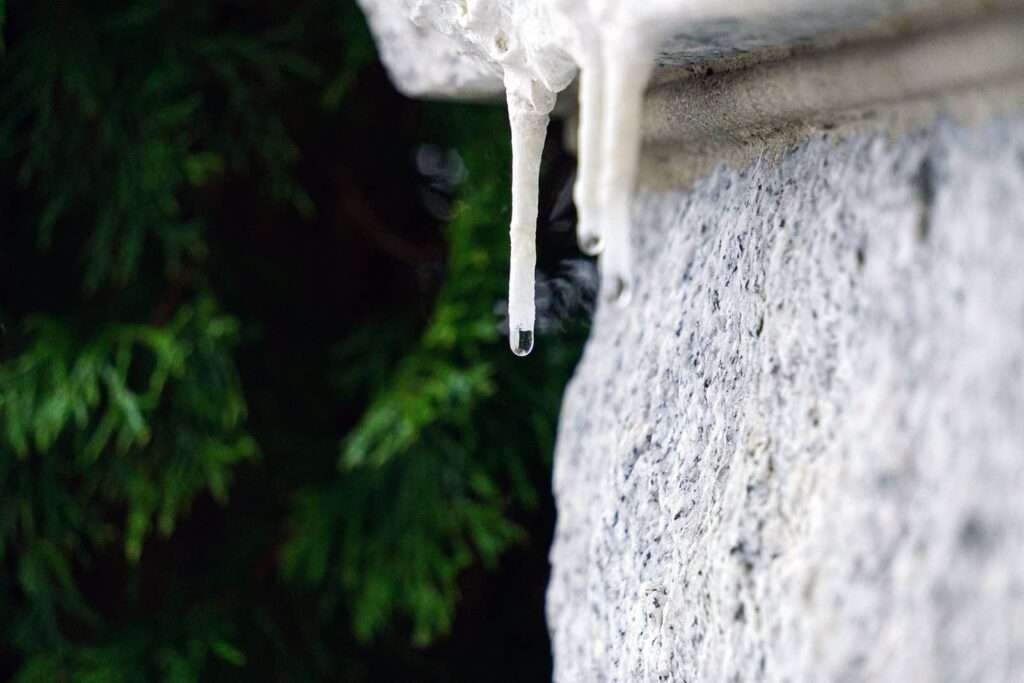
Table of Contents
What Do Landscapers Do in Winter?
During winter, gardeners don’t hibernate but continue to work diligently and strategically. They carry out important tasks such as trimming trees in a strategic manner to optimize their health, clearing snow from walkways and driveways to ensure safety, evaluating and addressing any pest issues, and performing property maintenance. Essentially, they get ready for the upcoming spring season by assessing and planning for the future design and color schemes of gardens. There’s much more to what gardeners do in winter; if you dig deeper, you’ll uncover a whole range of fascinating and vital tasks that lay the groundwork for the year ahead.
Key Takeaways
- Landscapers focus on winter landscape design planning, considering plantings, color palettes, and hard elements for spring appeal.
- They perform snow removal and ice management to ensure safe and accessible terrain during harsh winter conditions.
- Winter pruning and tree services are provided, including trimming trees and managing tree health to minimize cold stress.
- Landscapers install hardscape elements like patios, decks, walkways, and water features to enhance outdoor spaces.
- They conduct winter property maintenance, clearing snow, mulching, installing windbreaks, and checking for signs of damage or disease.
Winter Landscape Design Planning
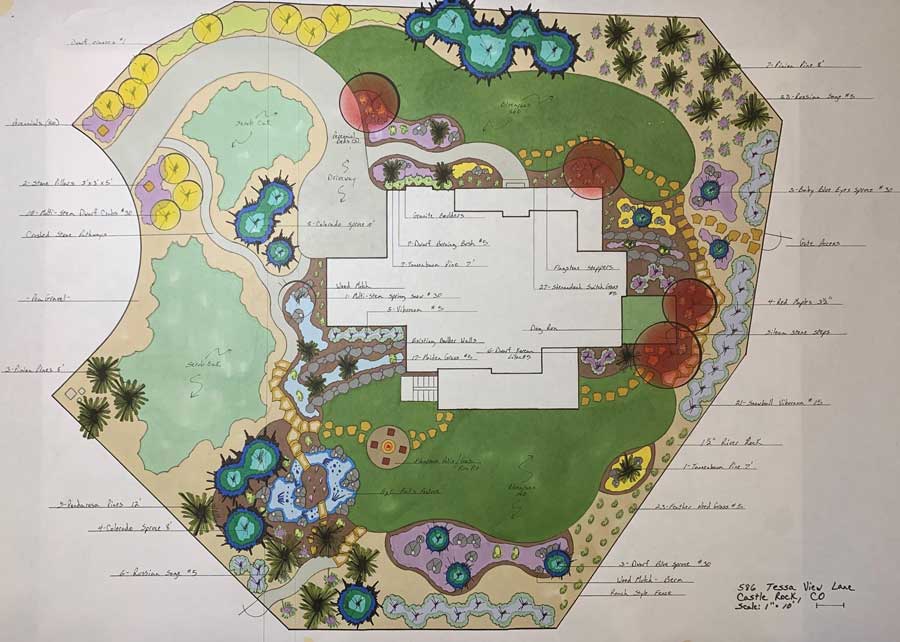
As winter approaches, it offers a great chance to plan your outdoor design for the upcoming spring. With the environment covered in snow, you can clearly envision the layout and structure of your garden. This is an ideal moment to take a step back, evaluate your current scenery, and imagine the potential changes.
Start by examining the trees and shrubs that are still visible during winter. Are they offering the framework and visual appeal you desire? Review their positioning and consider if additional plantings or rearranging would enhance your design. Also, think about the color palette. Early planning guarantees you’ll have a lively, colorful garden once spring arrives.
In addition, take a moment to inspect your hard elements such as walkways, patios, and decks. The starkness of winter can emphasize any areas that require maintenance or enhancement. Plan for these tasks now, and you’ll be prepared to begin as soon as the weather improves.
However, keep in mind, winter is also a period for relaxation and revitalization, both for you and your garden. Use this time to dream, plan, and get ready for the upcoming year. With careful preparation, you’ll create an outdoor area that’s prepared to bloom when spring arrives.
Snow Removal and Ice Management
In the midst of winter, handling snow and ice becomes a primary concern for groundskeepers. It’s essential to guarantee that the terrain stays safe and accessible, in spite of the harsh weather conditions. In your role as a skilled landscaper, here’s what you might be doing during these chilly months.
- Snow Clearing – Landscapers are often accountable for keeping walkways, driveways, and parking lots free of snow. This involves consistent monitoring of weather forecasts, planning for snow removal, and the physical labor of shoveling or using snow blowers and plows.
- Ice Management – Many landscapers also need to oversee ice buildup on surfaces. This may involve the use of ice melt products, sand, or other materials to improve traction and prevent slip-and-fall accidents.
- Roof Snow Removal – In Colorado, heavy snowfall can lead to roof damage. Landscapers may be tasked with removing excess snow from roofs to prevent structural damage.
- Winter Equipment Maintenance – Landscapers may also manage the maintenance of winter equipment. Regular upkeep of snow blowers, plows, and other tools guarantees they’re prepared to handle the winter weather.
Winter Pruning and Tree Services
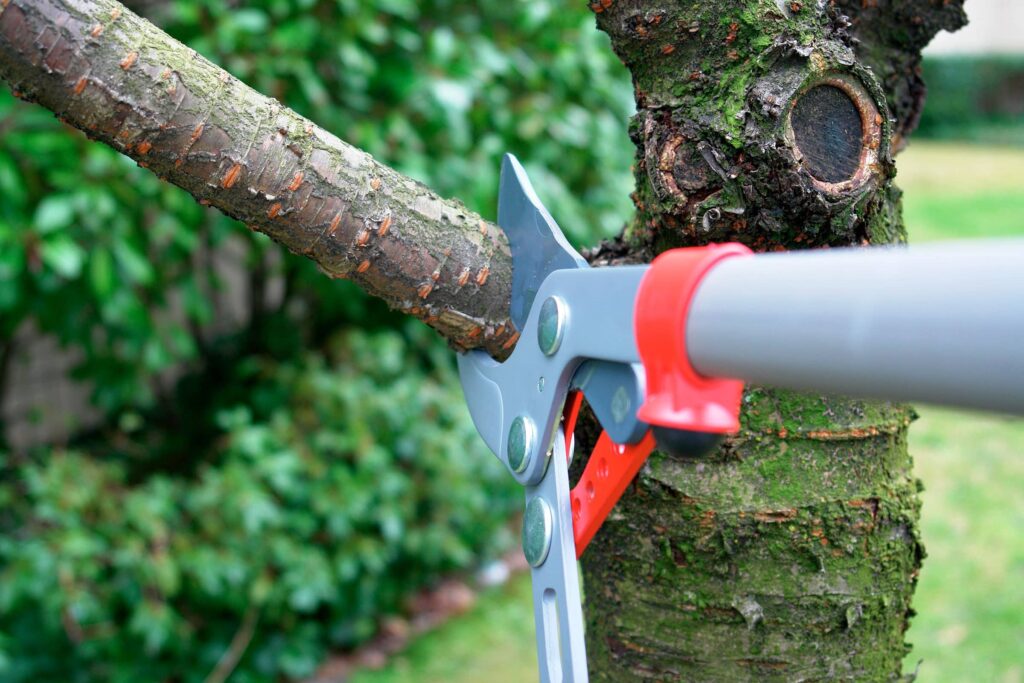
In the midst of the winter cold, your responsibility as a garden designer doesn’t pause when it comes to trimming and tree services. Indeed, this season is an important time for such tasks. It’s often easier to see the tree’s structure when it’s bare of leaves, making it simpler to make strategic cuts.
Trimming in winter also reduces the risk of spreading tree diseases, since many disease-causing organisms are inactive during this time. Nevertheless, it’s important to know which trees are best pruned in winter. For instance, late winter is ideal for trimming summer-blooming trees and shrubs, as they’ll begin their robust growth in spring.
Apart from trimming, providing tree services like pest management and tree health assessment is essential. Cold weather can stress trees, making them vulnerable to pests and diseases. Regular check-ups can help you identify any issues early, so you can address them effectively.
Installation of Hardscape Elements
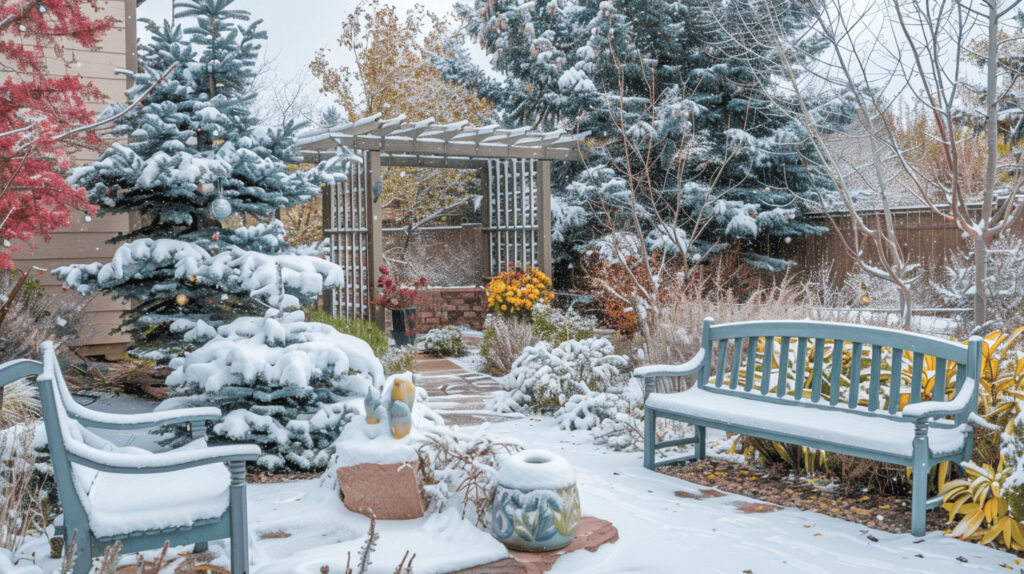
Braving the cold of winter can be a perfect time for you to focus on the installation of hardscape elements in your garden. While the plants are dormant, it’s a prime opportunity to create or improve the structural foundation of your outdoor area.
- Patio or Deck: You can set up a new patio or deck, or expand your current one. This not only provides a space for outdoor gatherings but also adds value to your property.
- Walkways and Paths: Installing or upgrading walkways can enrich the accessibility and safety of your outdoor area, especially during icy winter months.
- Retaining Walls: These can be constructed or repaired to manage soil erosion, especially important when spring rains return.
- Water Features: While you might not use them until warmer weather, winter is an excellent time to set up ponds, fountains, or waterfalls.
Winter Property Maintenance
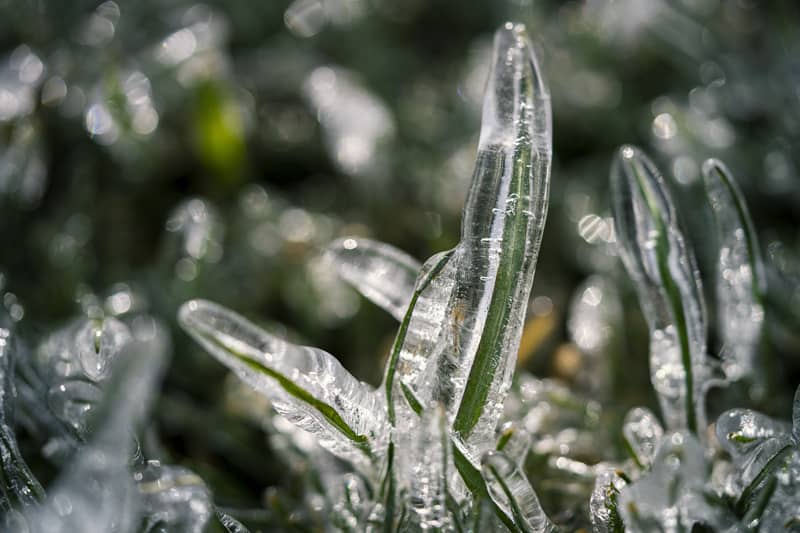
Winter property maintenance is a crucial task for gardeners. It’s not just about keeping your garden looking beautiful during the colder months; it’s about ensuring its health and readiness for the spring.
Your first priority should be clearing snow from walkways and driveways. This not only makes your property safe for use, but is necessary to prevent damage to the pavement below. Don’t forget to remove snow from trees and shrubs too, as the weight can cause branches to break.
Next, you’ll want to protect your plants. Mulching is vital, as it helps insulate the soil and provides nutrients for the plants. You should also consider installing windbreaks or burlap screens to shield delicate shrubs from harsh winds.
Lastly, remember to regularly check your property for signs of damage or disease. Look for broken branches, pests, or signs of plant disease. If you spot any issues, address them promptly to prevent further damage.
